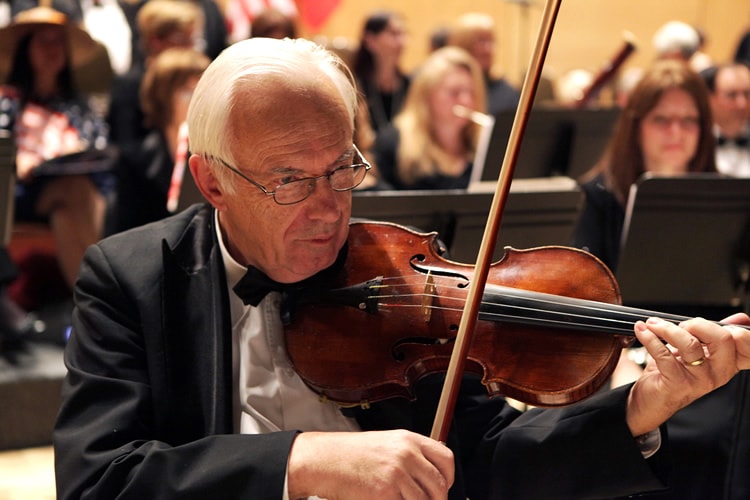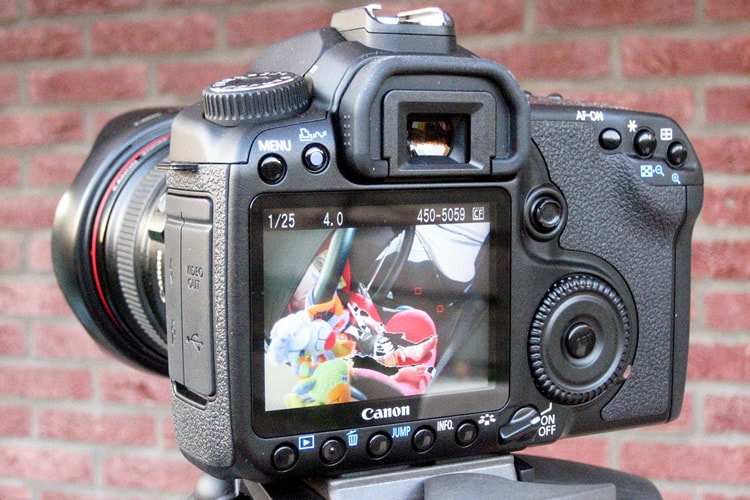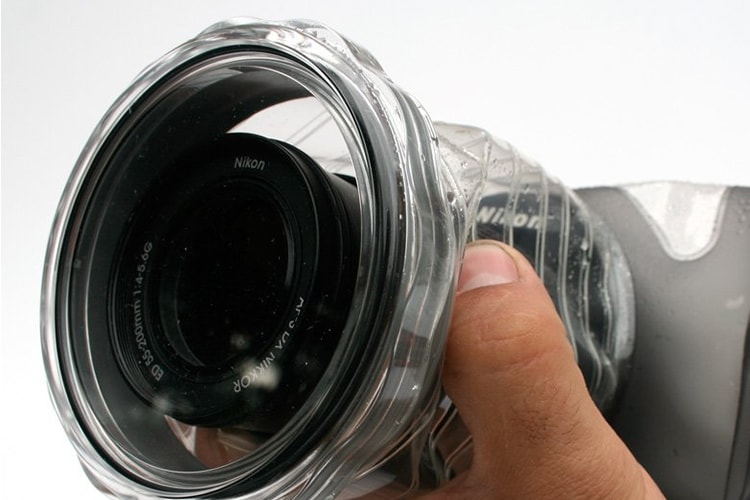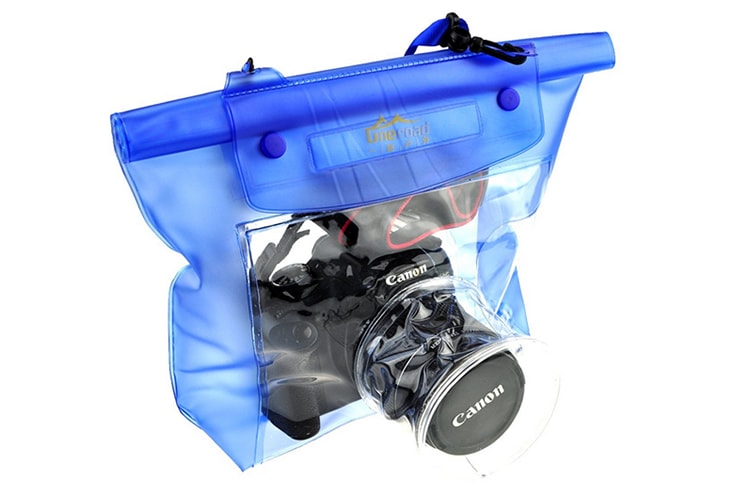Photography Is One Of The Most Disruptive Art Forms
Photography is one of the most disruptive arts. Your average photographer in a professional setting will carry basic things like tripods, spare lenses, and a strobe flash, but rarely will there be equipment that does anything to disguise the noises and distraction of the camera itself.
The sound of the mirror flipping inside of the camera body is very conspicuous; everyone is familiar with the sound of a shutter clicking, and this makes the camera a very intrusive object in certain situations.
Mirrorless cameras with interchangeable lenses are silent and non-invasive much like compact cameras, and they have picture quality control features comparable to high-end DSLRs. But these types of cameras will go for much higher prices than your entry-level DSLR, and many of these smaller cameras have drawbacks like the lack of an optical viewfinder or external controls. Even in shooting situations that are very quiet, there still might be more reason to opt for a DSLR than a mirrorless camera, even if DSLRs look and sound distracting.
The sound of the shutter closing does masks using a DSLR in cases like classical concerts, street photography, or even taking photos of wildlife very difficult though. Sometimes in these situations, the quietness of the environment is prioritized over actually getting the picture.
Conventional photography may be even impossible to perform in this environment. You may be asked to leave if you’re being too loud, or you may ruin the nights of the people around you. And people can subconsciously act differently when they’re aware they’re being filmed, making what are supposed to be candid photos appear awkward and invasive. Posed photography shots generally never have any issues with noise or camera distraction as the subjects are aware and willing to have their picture taken.

Settings like classical concerts usually are completely quiet except for the music. Even coughing or a phone going off is very frowned upon, so you can imagine how difficult performing photography in such a place is. Photo by Eric Bridiers, United States Mission Geneva.
Silent Mode On
The first thing you should do is to find out how to turn on ‘silent’ mode on your camera. Most DSLRs have one or two options (e.g. Silent Mode 1, Silent Mode 2) for this feature.
In silent mode, the mirror in the camera stays up the entire time, so there’s no loud clicking noise that comes with the mirror flipping up or down.
However, most cameras can only have live preview, meaning the preview photo is only on the camera’s LCD screen and not the viewfinder, while silent mode is enabled, so you won’t be using the viewfinder at all. In silent mode, all of your camera focusing will have to be done on the camera screen itself. Another added disadvantage to silent mode is that you won’t have the camera pressed against your face to steady it, making photos taken with slower shutter speeds more difficult to keep in focus.
The Downsides of Live Preview

This is what a DSLR looks like with live preview mode enabled. Photo by Marcel030NL.
There are a few things you can do to combat the disadvantages that come with using live preview mode. Since you already have to hold the camera further away from you to see the screen, you also will be able to place your camera down or to lean it against any surfaces or objects around you, letting them hold it steady for you.
In this way, your wrists and arms function as parts of a tripod, but you won’t always be able to find something to set your camera on when shooting. If that’s the case, then you should place your elbows against your abdominal area and keep them extended. This way, you can look down to see what’s on your camera’s screen and your arms are being pressed against something, so they’ll better keep the camera they’re holding steady.
Switch On Auto-Focus
You should also switch to auto-focus mode on your lens for shots with a lot of movement or have subjects that are constantly shifting in and out of focus.
As you’ll only be able to view the preview of what your image will be on the small LCD screen of your DSLR and not the actual viewfinder itself while in live preview and silent shooting mode, focusing quickly becomes the most difficult aspect of shooting. You won’t be able to tell how sharp your image really is on the length of your camera’s compact screen, and so working only in live preview mode makes it very easy to accidentally take, keep, and move on from a blurry or out-of-focus shot.
In your camera manual or online, look up information about the auto-focus points and the other number of auto-focus features and limitations specific to your camera. Auto-focus is something that can combat focusing issues you will face while trying to shoot silently, but there are certain techniques that will give you more control over auto-focus while it’s switched on.
Reducing The Noise Even More
Many times, the quiet or silent mode on the camera still isn’t enough in situations where there is little to no background noise and it is an environment that cannot be disturbed. Once you’ve gone through all the options in the camera’s software itself, you can do a few things to physically mute the sound emanating from your camera.
Just covering the area of the camera body around the mirror isn’t enough to shield the sound. You have to actually seal the camera entirely in order to actually muffle the sound, which can be done by buying and equipping a full-body camera housing.
Underwater Housing To Reduce Noise
To find a camera case that truly and completely seals your camera inside of it, you should look for underwater or waterproof camera cases. Many underwater camera cases on the market have exact dimensions for many specific cameras or certain camera types, so you should see if you can find any waterproof cases designed specifically for your camera model.
There are also universal underwater camera housings, or other general camera housing cases designed to fit for specific brands or model lines. For example, there is the underwater camera housing case from Aquapac, which fits for NIkon, Sony, and Canon DSLRs and can be found on Amazon for about $120.

Featured above is the Aquapac underwater housing case, one of the waterproof cases in the mid-level price range.
Waterproof housing cases are not usually cheap and can become very expensive with the onset of certain features, but there are some viable and very affordable options, like the underwater housing pouch from EarlyBirdSavings, which can also be found on Amazon for less than $30.

Featured above is the EarlyBirdSavings waterproof camera pouch, one of the cheapest options on the market.
Of course, usability and ease of use of the camera cases go up with their prices. While a sealed plastic pouch over your DSLR would muffle the sound of the shutter and actually be waterproof up to a certain depth, it would be very difficult to try and operate as it is just a pouch and not an actual case with designated fit and form to fit the camera parts and buttons.
Many of the mid-range level underwater camera housing cases, while allowing room for the buttons to use the manual mode of your camera, will greatly impair your ability to zoom easily and effectively. With full-body camera housings, the trade-off to the protection and soundproofing is a loss of ease in interface and an increase in size and bulk. This handicap in zoom combined with the loss of using the optical viewfinder on your camera in silent mode makes silent photography one of the most difficult techniques to master.
Again, full-body camera housings can become quite expensive, and sometimes you don’t ever give any consideration or thought to purchasing equipment until the time comes that you actually need it. But you can emulate the function of a full-body camera housing in a cheap, quick, and temporary way with materials as simple as ziplock bags.
As sealing the camera off is the only way to ensure the shutter sound is physically blocked and reduced, you can buy very large ziplock bags and place and seal them over your camera. Since plastic bags will crinkle and make a serious amount of noise, you should make sure every bit of air is gone before zipping the bag up. You can also tie it against the camera body to ensure that the bag is completely devoid of air and depth, and if you’ll be placing a two or more ziplock bags over your camera, tying it with string or rubber band or even taping the bags so that they’re completely tight is a must.
Ziplock bags are very translucent so you’ll still be able to focus fairly accurately with a bag over your camera, but if you use more than one bag, which you’ll need to if you’re looking to really muffle your camera, the bags will become too opaque to clearly see your screen, so you should cut a camera screen-sized hole into the first bag(s) over your camera over the position of your camera screen.
Leave the last camera bag or two intact so your camera is still completely sealed in some way. Using this way, you’ve essentially created a form-fitting, sealed plastic case for your camera which will muffle the sound by a very large amount.
Conclusion
The abrupt and loud click of a DSLR going off is one of the lesser-brought up issues that is common with photography. Photojournalists, concert photographers, and street photographers all will value silence in their work as their participation or noises will the natural environment of their setting.
There are many things you can do to muffle the sounds of your shooting, but the most important thing that will affect how people see and hear you is how you act while taking the pictures themselves. Be considerate, be calm, and be confident; since photography is by nature invasive, many people naturally feel slightly awkward or distrustful toward someone with a camera, so it is up to you to change how they see you with your demeanor and actions.
